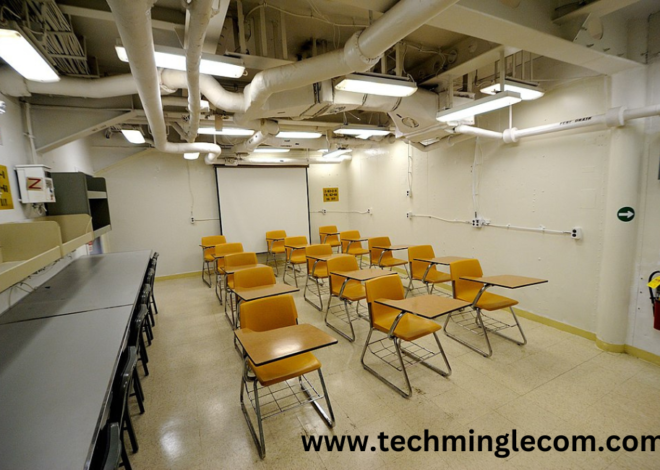
Educating the Retarded Child:100% Building Brighter Future and Effective Strategies
Educating the Retarded Child
Our aim to Educating the Retarded Child and intellectual disable child.Understanding and supporting children with intellectual disabilities is crucial for their development and integration into society. Although the term “retarded” is outdated and considered offensive, it historically referred to individuals with intellectual disabilities. Today, we use more respectful language that acknowledges their dignity and potential. This guide aims to provide comprehensive information on educating children with intellectual disabilities, highlighting strategies, tools, and resources to foster their learning and growth.
Identifying Intellectual Disabilities

Early Signs and Diagnosis
Recognizing the early signs of intellectual disabilities is essential for timely intervention. These signs may include delayed milestones, difficulty in learning new skills, and challenges in social interactions. Diagnosis often involves a combination of medical assessments, psychological evaluations, and developmental screenings.
Types of Intellectual Disabilities
Intellectual disabilities can vary widely in severity and type. They can be classified into different categories, such as Down syndrome, Fragile X syndrome, and autism spectrum disorders. Each type presents unique challenges and requires tailored educational approaches.
Creating an Inclusive Environment
Importance of Inclusion in Education
Inclusion means integrating children with intellectual disabilities into mainstream classrooms, where they can learn alongside their peers. This approach promotes social acceptance, reduces stigma, and enhances learning opportunities for all students.

Strategies for Inclusive Classrooms
Creating an inclusive classroom involves differentiating instruction to meet diverse needs, fostering a supportive and respectful environment, and utilizing teaching assistants or aides to provide additional support.
Individualized Education Programs (IEPs)
What is an IEP?
An Individualized Education Program (IEP) is a customized plan designed to meet the unique educational needs of a child with disabilities.It details specific goals, accommodations, and services needed to support the student’s learning.
Benefits of IEPs for Students and Teachers
IEPs provide a structured approach to education, ensuring that each child’s needs are met. They also help teachers by offering clear guidelines and resources for effective instruction.
How to Develop an Effective IEP
Developing an IEP involves collaboration among teachers, parents, specialists, and the student (when appropriate). It should include measurable goals, tailored strategies, and regular progress reviews.
Teaching Strategies for Children with Intellectual Disabilities

Differentiated Instruction and Educating the Retarded Child
Differentiated instruction involves tailoring teaching methods to accommodate different learning styles and abilities. This can include modifying lesson plans, providing visual aids, and allowing extra time for tasks.
Use of Visual Aids and Technology for Educating the Retarded Child
Visual aids, such as charts, pictures, and videos, can enhance understanding and retention. Technology, including tablets and specialized software, can also support learning through interactive and engaging tools.
Hands-On Learning Activities
Hands-on activities, such as art projects, science experiments, and practical exercises, help reinforce concepts and provide concrete learning experiences.
Communication Techniques and Educating the Retarded Child

Verbal and Non-Verbal Communication
Effective communication with children with intellectual disabilities often requires a combination of verbal and non-verbal methods. Clear, simple language and positive body language can aid understanding.
Augmentative and Alternative Communication (AAC)
AAC methods, such as sign language, picture boards, and speech-generating devices, can support children who have difficulty with traditional speech.
Behavior Management and Educating the Retarded Child
Understanding Behavioral Challenges
Children with intellectual disabilities may exhibit behavioral challenges due to frustration, communication barriers, or sensory sensitivities. Understanding the root causes of these behaviors is key to addressing them effectively.
Positive Behavioral Interventions and Supports (PBIS)
PBIS involves proactive strategies to promote positive behavior and prevent issues. This includes setting clear expectations, providing consistent routines, and offering positive reinforcement.
Building Social Skills
Encouraging Peer Interaction
Facilitating peer interaction helps children with intellectual disabilities develop social skills. Group activities, buddy systems, and cooperative learning projects can foster friendships and social understanding.
Role of Play in Social Development
Play is a vital component of social development. It allows children to practice communication, negotiation, and problem-solving skills in a natural, enjoyable setting.
Collaboration with Parents and Caregivers
Importance of Parent-Teacher Collaboration
Collaboration between parents and teachers ensures a cohesive approach to the child’s education. Regular communication and joint problem-solving strengthen the support system around the child.
Effective Communication with Families
Effective communication with families involves regular updates, active listening, and empathy. Understanding the family’s perspective and incorporating their insights can enhance the educational experience.
Training and Support for Educators and Educating the Retarded Child
Professional Development Opportunities
Continuous professional development is crucial for educators working with children with intellectual disabilities. Training sessions, workshops, and conferences provide valuable knowledge and skills.
Resources and Support Networks
Educators can benefit from various resources and support networks, including online forums, professional organizations, and local support groups. These platforms offer advice, share best practices, and provide emotional support.
Legal Rights and Advocacy
Overview of Legal Rights for Students with Disabilities
Students with intellectual disabilities are entitled to specific legal rights, including access to free appropriate public education (FAPE) and the least restrictive environment (LRE). Understanding these rights is crucial for advocating effectively.
Role of Advocacy in Education
Advocacy involves representing and defending the rights and interests of students with disabilities. Parents, educators, and community members can all play a role in ensuring equitable education.
Community Resources and Support
Finding Local Resources
Local resources, such as special education services, support groups, and therapy centers, can provide additional support for children with intellectual disabilities and their families.
Benefits of Community Involvement
Community involvement fosters a sense of belonging and support. Activities like community events, volunteering, and recreational programs can enhance social skills and provide enjoyable experiences.
Technological Aids in Education
Assistive Technology Tools
Assistive technology tools, such as speech-to-text software, adaptive keyboards, and educational apps, can facilitate learning and communication for children with intellectual disabilities.
Benefits of Technology in Special Education
Technology offers numerous benefits, including personalized learning, increased engagement, and access to a wide range of educational resources. It can also support independent learning and skill development.
Transition Planning

Preparing for Life After School
Transition planning involves preparing students with intellectual disabilities for life after school. This includes developing life skills, exploring vocational training options, and considering higher education opportunities.
Vocational Training and Higher Education Opportunities
Vocational training programs and inclusive higher education opportunities can provide pathways to meaningful employment and continued personal growth for individuals with intellectual disabilities.
Conclusion
Educating the Retarded Child with intellectual disabilities requires patience, creativity, and a deep commitment to their success. By embracing inclusive practices, developing individualized education plans, and fostering strong communication with families, educators can create supportive learning environments that empower these children to reach their full potential. Remember, every child has unique abilities and the right to an education that nurtures their growth and dignity.
FAQs
What are the most effective teaching strategies for children and Educating the Retarded Child?
- Differentiated instruction, the use of visual aids, hands-on learning activities, and technology integration are highly effective strategies.
How can parents support their Educating the Retarded Child?
- Parents can support education by maintaining open communication with teachers, creating a structured home environment, and using educational games and activities to reinforce learning.
What role does technology play in Educating the Retarded Child?
- Technology provides personalized learning experiences, enhances engagement, and offers tools for communication and skill development, making it a valuable asset in special education.
Why is inclusion important in Educating the Retarded Child?
- Inclusion promotes social acceptance, reduces stigma, and provides equal learning opportunities, benefiting all students by fostering a diverse and supportive classroom environment.
What are some common challenges faced by children with intellectual disabilities Educating the Retarded Child?
- Common challenges include difficulties with communication, social interactions, and behavior management. Addressing these challenges requires tailored strategies and support.


